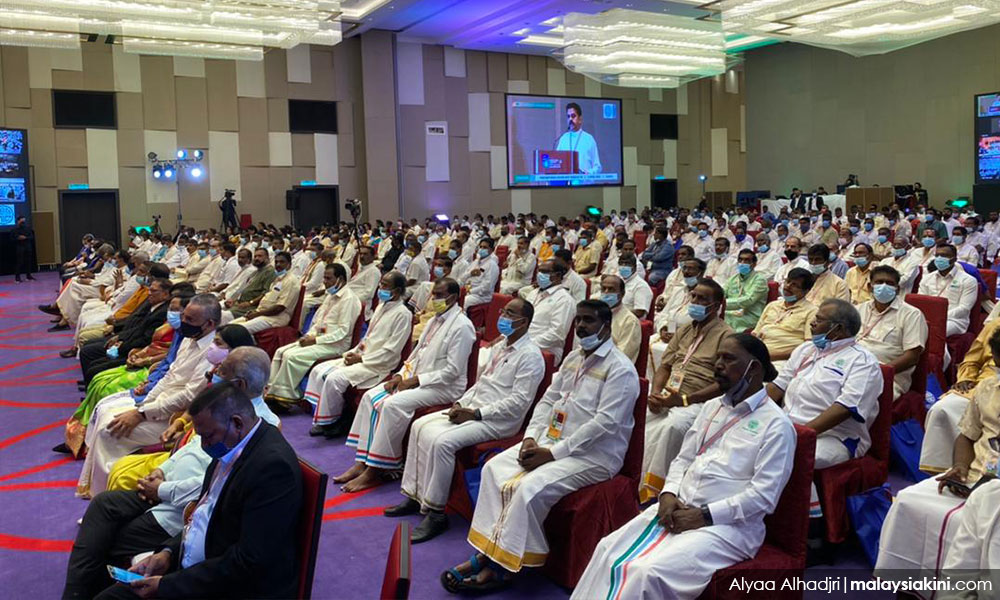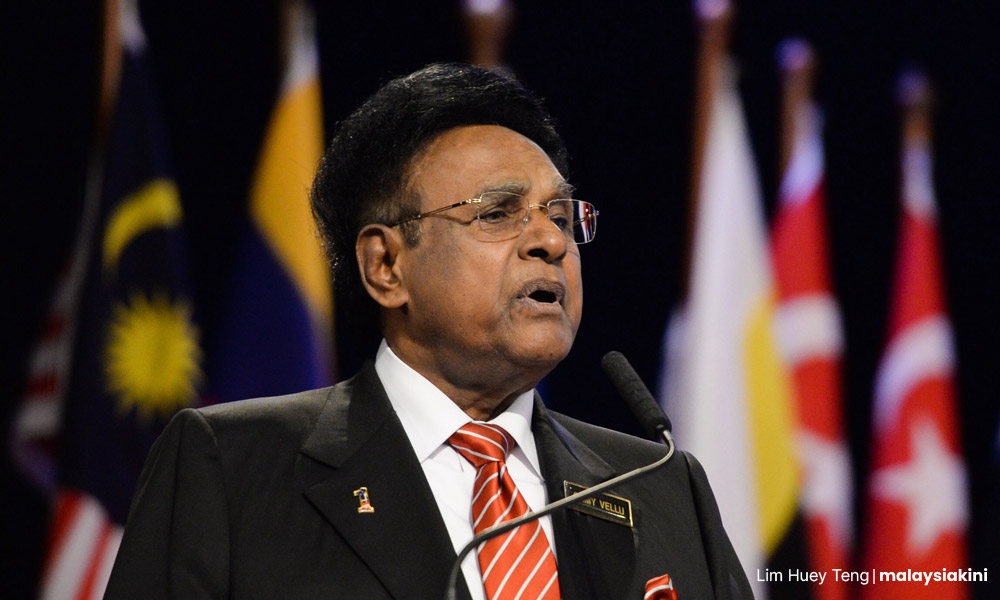ADUN SPEAKS | MIC’s long-time president and supremo S Samy Vellu died at the age of 86 on Sept 15. His death resulted in an outpouring of grief and sadness.
Whatever can be said about the man and leader, his passing elicited sympathetic comments from friends and foes.
His friends and party members called him a legend and mentor, whereas his one-time political foes described him as a straight fighter without personal agenda.
He was lauded for his contributions to the Indian community in the fields of education and social development. Some well-known poets from Tamil Nadu even hailed him as an irreplaceable loss to the Tamil community.
He was harsh towards his enemies but rewarded his friends handsomely.
Since his demise a few days ago, there has been little or no analysis of Samy beyond his personality, style, and mannerisms.
As a result, there is a gap between his purported leadership and to what extent his party and the Indian community benefited from his leadership.
Samy’s iron grip on MIC
There are different kinds of leadership: autocratic, democratic, transformational, and others. What was the kind of leadership offered by Samy and how did the Indian community benefit from it?
There is no problem in labelling Samy Vellu’s leadership style as autocratic or even authoritarian. It was more of a degree than fitting exactly with the autocratic label.
For Samy, leadership was the key to making decisions and their implementation. He did not strive for consensus and consultation, they simply did not fit with his leadership style.
For all intents and purposes, MIC was a one-man show, with Samy in command. In brief, Samy was MIC, and MIC was Samy.

He managed the party, and to some extent the Indian community, in such a way that there was no place for democracy or consultation in decision-making. Autocratic leadership meant not questioning Samy’s decisions and accepting them as good for the party and society.
Challenges to his leadership were not welcomed. Either the challengers had to succumb to the dictates of the leader or face the prospect of being sacked from the party and their government positions.
It was well known what happened to those leaders who opposed Samy. They were either marginalised in the party or were removed from government posts.
If Samy wanted to do something for the benefit of the Indian community, he will do it with or without much consultation.
For instance, the formation of Maika Holdings, Maju Institute of Education Development (Mied), and others were done without much consultation. Whether such establishments would really benefit the Indian community was not fully researched and analysed.
It was this impetuous thinking of an autocratic leader that caused much malaise amongst members of the Indian community.
Samy’s autocratic leadership was enforced without feelings or compassion for those below him. It might have lent a superficial sense of unity in the party, but it destroyed any internal democracy.
Obedience and compliance numbed creativity and freedom in the party. Those who could not accept Samy’s authoritarian leadership left the party or joined the opposition.
After Samy lost power, many Indians drifted away from the party to join DAP and PKR. The present weakness of the MIC was caused by none other than the authoritarianism of Samy.
To engender a sense of unity, Samy cracked down on dissent within the party. The synthetic preservation of unity came at the price of loss of Indian support to the MIC and BN in later years.
The Hindraf movement was the last straw that broke the camel’s back. It revealed, among other things, the ineffective nature of MIC under Samy’s leadership.
The huge demonstrations in Kuala Lumpur in late 2007 organised by Hindraf shifted Indian support from BN to Pakatan Rakyat in the 2008 general election.
Subservience to Umno
Samy’s leadership might have placed the lid on internal politics, but its subservience to Umno in the BN coalition was legendary.
While Samy was not willing to concede to internal demand in the name of preserving unity, his authoritarianism was limited in relation to Umno.
Following his demise, one fugitive commentator remarked that Samy might have been tough with Indians, but he was meek as a mouse to Umno leaders.

As the former minister of works and public amenities, he ensured that a portion of revenue from infrastructure projects was reserved or channelled to the coffers of Umno.
I am not sure about this allegation, but Samy’s long reign as party leader was something that did not disturb the status quo or the political position of Umno.
The twin effects of autocratic leadership and subservience to Umno might have ensured Samy Vellu’s survival in the party and the government. But unfortunately, they proved to be disastrous to the Indian community in the country.
It was the failure of the MIC in general and Samy in particular to address the myriad problems of the Indian community that contributed to the radicalisation of the rank and file, leading them to support Hindraf and opposition parties such as DAP and PKR.
The overwhelming support of the Indian community in favour of the opposition in the 2008 general election proved to be the death knell of MIC.
I doubt whether the MIC has recovered from this electoral debacle. Without Indian support, Pakatan Rakyat would not have captured the five states in the 2008 general election. Similarly, without Indian support, Pakatan Harapan would not have captured the federal government in 2018.
Indians make a difference in about 60 electoral constituencies in the country. No party or coalition intending to contest and win in the coming 15th general election can ignore the support of the community.
Thanks to the autocratic ways of Samy, Indians are solidly behind the Harapan coalition.
Unfortunately, the leadership of the MIC is in tatters. It would be near impossible for the party that was so boldly managed by Samy to make a political comeback.
In the end, Samy’s own bold, abrasive, and ferocious leadership ended up destroying MIC, which was formed in 1946 in the wake of pan-Indian nationalism.
P RAMASAMY is Perai assemblyperson.
The views expressed here are those of the author/contributor and do not necessarily represent the views of Malaysiakini.

